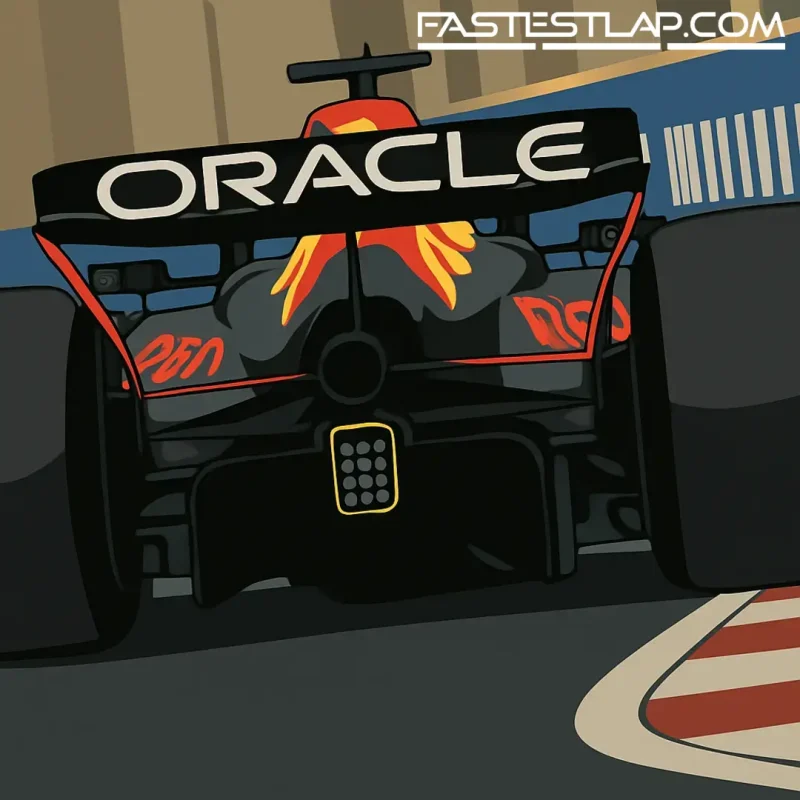Baku’s long shadows made the Red Bull RB21 look every bit the ruthless machine it is, but Formula 1’s gaze is already fixed further down the road. The 2026 rulebook is looming — 50% electrification, 100% sustainable fuel, active aero — and with it, a familiar tension between vision and invoice.
The headline worry, inevitably, is cost. Reports inside the paddock this season have bounced around a number that turns heads: $170 to $225 per litre for the new fuel, potentially north of $300 once development wars begin. That’s a moonshot away from today’s $22-$33 ballpark, and enough to make even big manufacturers raise an eyebrow.
Karun Chandhok, who’s never been shy about calling the industry as it is, has sounded a note of pragmatism. Speaking recently, the Sky F1 pundit argued that nobody truly knows which propulsion tech will win out — synthetic fuels, full electric, hydrogen, some hybrid cocktail — and that motorsport’s role is to do what it does best: experiment at speed.
“I’m not convinced that there’s any single person on the planet who can truly say that they know what the future is,” Chandhok said. “It is a tricky time for the entire industry to work out, but where motorsport comes into play is we can help to accelerate some of the answers for the outside world.”
Chandhok pointed to the World Rally Championship and the British Touring Car Championship as active case studies for sustainable fuels, the sort of low-volume, high-innovation arenas where you can charge more than you ever could at a public pump. That’s the point, he says: take the pain early, refine fast, and pull the cost curve down later.
“The more we test it and the better we can develop it,” he added, “it’ll bring the price down to potentially the consumers on the planet.”
None of this is a repudiation of what F1’s already achieved. The current V6 turbo-hybrids, introduced in 2014, are marvels of efficiency — routinely surpassing 50% thermal efficiency in an era when most road cars sit in the low 30s. The 2026 package doubles down on that ethos, targeting a roughly 50/50 split between electric power and the internal combustion engine, with the added complexity of fuels produced entirely from sustainable sources.
The sticker shock is real, but so too is the conviction among team bosses that this is a bet worth placing. At Monza, Ferrari’s Fred Vasseur and Laurent Mekies were broadly aligned: don’t underestimate the scale of the task, but don’t miss the significance either.
“I think we don’t have to underestimate the challenge of going to 100 per cent sustainable fuel,” Vasseur told media in Italy. “It’s a huge step forward for F1 and a new direction we are taking. Honestly, the fuel is not yet frozen, which means it’s difficult to know the exact cost for next year. For sure, it’s a bit more than the current season. But this meeting [between the FIA and fuel suppliers] is more for the mid term and long term – to try to see how we can adapt the regulation in the future to keep things under control. But we must not underestimate the benefit of sustainable fuel. Yes, it has a cost – but it’s a huge step forward for F1.”
Mekies struck the same note, calling it “a breakthrough in terms of technology,” and underlining the unprecedented nature of running grand prix cars on fully sustainable fuel. Extracting performance to the standards F1 demands will be a monumental task for fuel and power unit manufacturers, he said, but the priority is getting the product right before dwelling on the bill.
There’s truth on both sides. Early on, the economics will be ugly. Volumes are tiny, development is frantic, and competitive pride ensures suppliers will push to find every last tenth, cost be damned. But motorsport’s history is littered with technologies that began as exotic, expensive moonshots before becoming standard kit: hybrid systems, energy recovery, turbocharging, composites. The reason it can work is precisely because it’s not a mass-market operation. F1 is a lab with global reach, funded by marketing budgets and engineering egos, and if it does its job, the world outside gets smarter and cheaper options a few years later.
What’s different this time is the messaging. The 2026 regulations aren’t just about lap time; they’re about relevance and responsibility. The balance F1 must nail is delivering a compelling sporting product — loud, fast, visceral — while proving that synthetic fuels can be produced at scale, used without guilt, and developed without bankrupting the participants.
That last part isn’t solved yet. Fuel specs aren’t frozen. Costs will be watched, and if necessary, regulated. But the direction of travel is clear, and it’s one the big players — and the rulemakers — have staked their reputations on.
So yes, the numbers being whispered around the paddock are eye-watering. And no, there’s no guarantee this is the propulsion endgame. But if you’re going to find out quickly, you do it here, where the world’s most efficient engines meet the most demanding rulebook, and every gain is chased like a chequered flag.
For now, the RB21s and SF-25s keep pounding out laps in 2025. The next generation, though, is already casting a long shadow. In a year’s time, we’ll find out whether F1’s biggest bet since 2014 was a masterstroke — or just very, very expensive homework.




